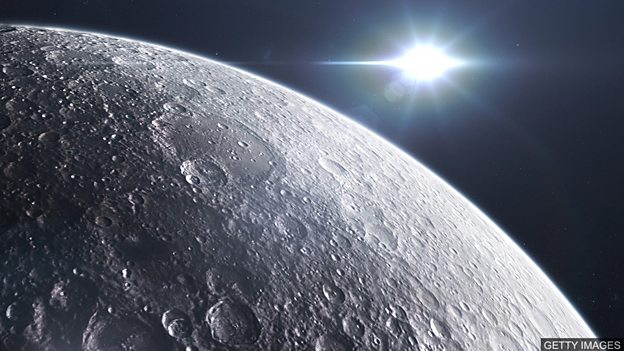媒体英语
How was the Moon’s crust formed? 科学家提出月球外壳形成的新观点

月球是由许多层状结构组成的,包括它厚厚的外壳,但你有没有想过月球最外层的 “月壳” 是怎样形成的?人们以前认为月球的岩石外层是由其表面深处的岩浆或熔融岩石形成的。
The scientists re-analysed a sample collected by NASA astronauts during the 1972 Apollo mission. What they found suggests large portions of the crust were formed at temperatures in excess of 2,300 degrees Celsius, which they say, could have been achieved by the melting of the outer layer.
科学家们重新分析了美国宇航局宇航员在1972年阿波罗登月任务期间收集的月球外壳样本。他们的发现表明,月壳的大部分是在超过2300摄氏度的温度下形成的,他们说,这可能是由于外层的融化造成的。
These temperatures are incredibly high and suggest a terrific impact helped not only to destroy the lunar surface, but to build it.
这些温度高得惊人,这表明一次极大的撞击不仅摧毁了月球表面,同时也促使其表面的形成。
The idea overturns previous theories that colliding asteroids and comets were a purely destructive process with the lunar crust being created by magmas rising from the interior.
这个观点推翻了之前的理论,即小行星和彗星的碰撞纯粹是一种破坏性的过程,以为月壳是由月球内部上升的岩浆形成的。
词汇
sample 样本
crust 外壳
outer layer 外层
terrific 极大的,剧烈的
lunar 月球的,月亮的
surface 表面
colliding 碰撞,撞击
asteroids 小行星
comets 彗星
interior 内部
阅读理解:请在读完上文后,回答下列问题。
1. True or false? The Moon’s magmas come from its outer layer.
2. Which sample did the scientists re-analyse?
3. According to the finding, how hot were most of the crust when they were formed?
4. What were the previous theories on how Moon’s crust was formed?
答案
1. True or false? The Moon’s magmas come from its outer layer.
False. They are from the interior of the Moon.
2. Which sample did the scientists re-analyse?
The scientists re-analysed a sample collected by NASA astronauts during the 1972 Apollo mission.
3. According to the finding, how hot were most of the crust when they were formed?
Large portions of the crust were formed at more than 2,300 degrees Celsius, according to the finding.
4. What were the previous theories on how Moon’s crust was formed?
Previous theories said that colliding asteroids and comets were a purely destructive process.



